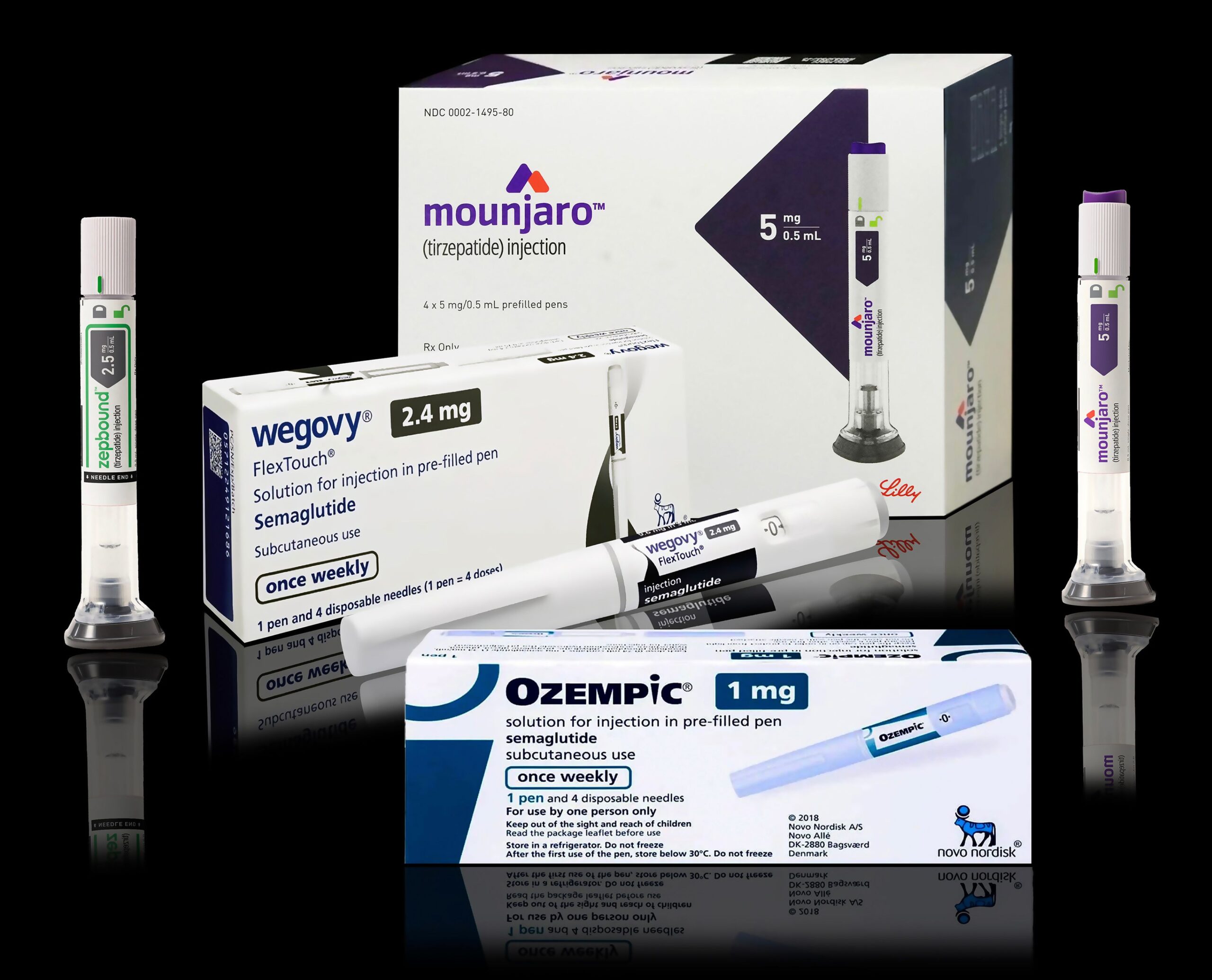Patients hoping to treat weight-related medical conditions need more than just antiobesity medications that are effective, but that also pose challenges for successful use.
That means food counseling should be part of a comprehensive treatment plan for obesity, according to experts who summarized the state of the research on the issue.
A group of 18 researchers came together to publish “Nutritional priorities to support GLP-1 therapy for obesity: a joint Advisory from the American College of Lifestyle Medicine, the American Society for Nutrition, the Obesity Medicine Association, and The Obesity Society.” It came out this month in the organizations’ respective journals.
The 24-page guide acknowledges that for some patients, the new glucagon-like peptide-1 receptor agonist drugs (GLP-1s) amount to weight loss via injection. But treatment success depends on a patient-centered approach involving more than a prescription.
Patients need counseling — and then must integrate into their lives — elements ranging from management of gastrointestinal side effects, to prevention of nutrient deficiencies, to preservation of muscle and bone mass.
“Despite the efficacy and growing utilization of these medications, real-world challenges are increasingly evident,” the paper said.
“All these challenges may be partially mitigated by an evidence-based, structured lifestyle program, particularly around food, when prescribing GLP-1s for obesity,” the advisory said. “However, practical guidance for clinicians to implement such an approach is limited.”
Medical effects
Studies have produced results showing GLP-1s have helped patients reduce their weight. But real-world efficacy generally has been lower, and weight regain is common when patients discontinue use of the medications, the advisory said. Research also has demonstrated clinical benefits for conditions ranging from heart failure to sleep apnea to chronic kidney disease to substance use disorders.
Gastrointestinal irritation is common, but not likely to lead to discontinuation. With a loss of appetite and lower energy intake, patients may develop vitamin and mineral deficiencies and symptoms such as fatigue, hair loss, skin flakiness, muscle weakness, poor wound healing and bruising, the advisory said. Muscle mass and bone density also may decrease.
Financial effects
Adherence to the drugs is relatively low for reasons that are unclear, although cost may be a factor. Based on current list prices, the drugs may cost up to $16,000 a year. Prices are lower with manufacturers’ rebates, dropping to $7,000 to $8,000 annually, and lower still with compounded versions, that still cost up to $3,000 a year.
While patients may experience improved quality of life, the GLP-1s have not provided a long-term financial return for health care overall. Several studies “have found that GLP-1 treatment costs exceed health care savings,” and one found patients using GLP-1 drugs had significantly higher health care costs than patients with obesity, but not using the drugs.
“Considering cost-effectiveness, i.e., health gained per dollar spent, most studies find that GLP-1s, even at currently discounted prices, do not meet accepted thresholds for cost-effective therapy,” the study said.
All those factors indicate something more is needed.
“These high costs, lower adherence in practice, and frequent weight regain after discontinuation, each highlight the importance of complementary nutritional and lifestyle counseling to help maximize overall efficacy and cost-effectiveness,” the advisory said.
Barriers to care
The researchers cited a number of difficulties in current practice:
- Visits with primary care physicians and non-obesity medicine specialists are usually short and centered on acute illness or needs, screening discussions, and medication management.
- Access is limited to lifestyle medicine approaches for obesity and its comorbidities. “For example, the Diabetes Prevention Program is known to reduce the risk of progression to diabetes and is covered by major payers, but has not been meaningfully scaled due to regulatory and implementation barriers,” the advisory said.
- There is no American Medical Association approval of category I Current Procedural Terminology codes for health coaching, so that remains a barrier to reimbursement.
- Private and public payer coverage for medical nutrition therapy for obesity remains limited, preventing broad utilization in practice.
“These pressures, alongside a frequent lack of practitioner education about integrating lifestyle management in medicine, have created a dearth of implemented behavioral and lifestyle counseling, accessible and effective referral programs, and integration into existing care delivery systems,” the authors said.
Getting started
The researchers suggested using a 5As Framework — assess, advise, agree, assist, and arrange — to guide physician-patient interaction toward a successful long-term plan. There also will be at least eight elements or nutritional priorities to support GLP-1 therapy for obesity.
- Initiation of GLP-1 therapy with a patient-centered approach.
- Completion of baseline nutritional assessment and screening.
- Management of gastrointestinal side effects.
- Navigation of dietary preferences and intake.
- Prevention and mitigation of nutrient deficiencies.
- Preservation of muscle and bone mass.
- Maximization of weight reduction efficacy.
- Promotion of other supportive lifestyle measures.
Under “arrange,” the experts noted physicians likely won’t go it alone with patients. Registered dietitian nutritionists, behavioral therapists, social workers and case managers all may be part of a team.
Along with medications, food counseling and a new menu, the authors emphasized the need for patients to take up resistance training and other physical activities. Good sleep, stress management and substance use cessation all will be part of the treatment plan.
More research is needed
The GLP-1 drugs still prompt questions and need more research. The researchers note physicians, other clinicians and patients refer to GLP-1s, but there is no widely accepted terminology to describe the medications. There also is room for research on measuring obesity and adopting definitions and treatments for clinical and preclinical obesity.
“In conclusion, although GLP-1s alone can produce significant weight reduction and related health benefits, several challenges limit its long-term success for individuals and populations,” the advisory said.
“Careful attention to evidence-based nutritional and behavior modification can help mitigate the adverse effects of these challenges,” the authors said. “Thus, all clinicians prescribing GLP-1s for obesity management should establish a thoughtful plan of care that includes thorough nutritional and lifestyle counseling before, during, and after the weight reduction period.”
